#Society of Jesus
Text

THE DESCRIPTION OF SAINT PAUL MIKI AND 26 COMPANIONS
Feast Day: February 6
"I am not from the Philippines. I am a Japanese and a Jesuit Brother… Having arrived at this moment of my existence, I believe that no one of you thinks I want to hide the truth. That is why I have to declare to you that there is no other way of salvation than the one followed by Christians. Since this way teaches me to forgive my enemies and all who have offended me. I willingly forgive the king and all those who have desired my death. And I pray that they will obtain the desire of Christian baptism." -St. Paul Miki
The first martyr of Japan, Paul Miki was born to a wealthy Japanese family circa 1562 in Settsu, Osaka Prefecture in Kansai region. At a young age, he entered the Society of Jesus and preached the Gospel successfully.
The church had been implanted in Japan fifty years earlier, and counted over 200,000 Christians. In 1588, the Emperor claimed that he was 'God,' and ordered all Christian missionaries to leave the country within six months. Some of them obeyed, but Paul and many others remained secretly behind.
In 1597, Paul was discovered and arrested along with twenty-five companions. They endured tortures and derision through several towns, with their left ears cut off, before being taken to Nagasaki. After making their confession, they were fastened to their crosses, with iron collars around their necks.
Their valor and bravery were wonderful to behold. They gave thanks to God by singing Psalms 25 and repeating: 'Into your hands, Lord, I entrust my life.'
Standing in the noblest pulpit of the cross, Paul said to the people: 'I am a Japanese by birth, and a Jesuit by vocation. I am dying for the Gospel of Jesus Christ. I do gladly pardon the Emperor, and all who have sought my death. I beg them to seek baptism and be Christians themselves.'
Then, four executioners unsheathed their spears and killed all of them in a short time. Their faces were serene, while they kept repeating: 'Jesus, Mary!'
On June 8, 1862, Pope Pius IX canonized him and his twenty-five companions.
#random stuff#catholic#catholic saints#jesuits#society of jesus#paul miki#paulo miki#pablo miki#peter bautista#pedro bautista#twenty-six martyrs of japan
30 notes
·
View notes
Text
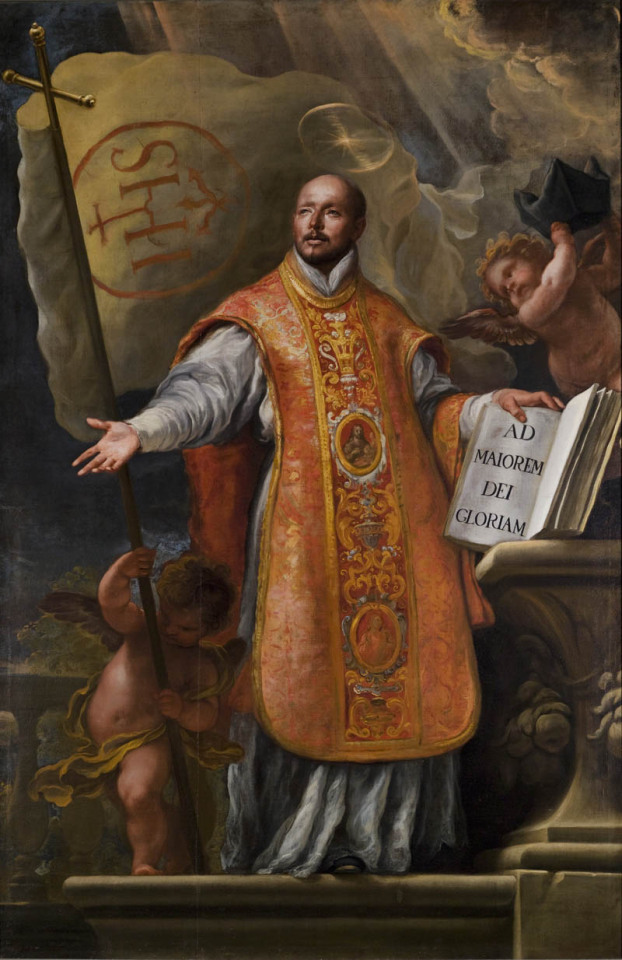

About St Ignatius of Loyola (left)
About St Philip Neri (right)
Post-Schism Bracket Round 1
#st ignatius of loyola#st philip neri#society of jesus#jesuits#catholic saint tournament#catholic#catholicism#polls#theology#tumblr polls#tumblr bracket#tumblr tournament#catholic saints#christianity
12 notes
·
View notes
Text
SAINT OF THE DAY (July 31)
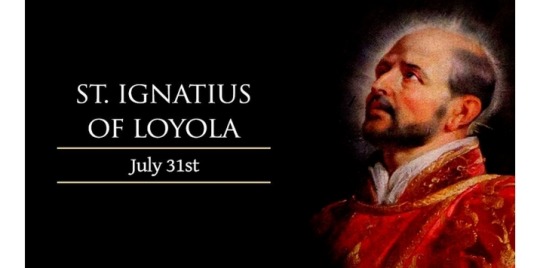
On July 31, the Universal Church marks the feast day of St. Ignatius of Loyola.
The Spanish saint is known for founding the Society of Jesus, also known as the Jesuits, as well as for creating the “Spiritual Exercises” often used today for retreats and individual discernment.
St. Ignatius was born into a noble family on 23 October 1491 in Guipuzcoa, Spain. He served as a page in the Spanish court of Ferdinand and Isabella.
He then became a soldier in the Spanish army and wounded his leg during the siege of Pamplona in 1521.
During his recuperation, he read “Lives of the Saints.”
The experience led him to undergo a profound conversion, and he dedicated himself to the Catholic faith.
After making a general confession in a monastery in Montserrat, St. Ignatius proceeded to spend almost a year in solitude.
He wrote his famous “Spiritual Exercises” and then made a pilgrimage to Rome and the Holy Land, where he worked to convert Muslims.
St. Ignatius returned to complete his studies in Spain and then France, where he received his theology degree.
While many held him in contempt because of his holy lifestyle, his wisdom and virtue attracted some followers, and the Society of Jesus was born.
The Society was approved by Pope Paul III in 1540, and it grew rapidly.
St. Ignatius remained in Rome, where he governed the Society and became friends with St. Philip Neri.
St. Ignatius died on 31 July 1556, probably of the "Roman Fever," a severe variant of malaria that was endemic in Rome throughout medieval history.
An autopsy revealed that he also had kidney and bladder stones, a probable cause of the abdominal pains he suffered from in later life.
He was beatified by Pope Paul V on 27 July 1609 and was canonized by Pope Gregory XV on 12 March 1622.
The Jesuits remain numerous today, particularly in several hundred universities and colleges worldwide.
On 22 April 2006, Pope Benedict XVI presided over a Eucharistic concelebration for the Society of Jesus.
He addressed the fathers and brothers of the Society present at the Vatican Basilica, calling to mind the dedication and fidelity of their founder.
“St. Ignatius of Loyola was first and foremost a man of God who in his life put God, his greatest glory and his greatest service, first,” the Pope said.
“He was a profoundly prayerful man for whom the daily celebration of the Eucharist was the heart and crowning point of his day.”
“Precisely because he was a man of God, St Ignatius was a faithful servant of the Church,” Benedict continued, "recalling the saint's special vow of obedience to the Pope, which he himself describes as 'our first and principal foundation.”
Highlighting the need for “an intense spiritual and cultural training,” Pope Benedict called upon the Society of Jesus to follow in the footsteps of St. Ignatius.
They should continue his work of service to the Church and obedience to the Pope so that its members “may faithfully meet the urgent needs of the Church today.”
8 notes
·
View notes
Text
Not Woke, but Catholic.
#livingdivinemercy #frchrisalar #socialjustice #jesus #marx #nietzsche" on YouTube
#catholic#catholicism#christianity#youtube#spiritual warfare#jesus christ#blessed virgin mary#our lady#demon#marxism#marxist leninist#karl marx#roman catholic church#roman catholic#the catholic church#catholic church#church#jesuscristo#society of jesus#lord have mercy#lord jesus christ#divine mercy#cult of woke#woke culture#anti woke#woke#wokeness#social justice#socialism#socialists
3 notes
·
View notes
Text

Et tu, America Magazine?
3 notes
·
View notes
Text
Nobunaga owned piles upon piles of European clothes...
It still doesn’t necessarily mean that he wore them, though.
I’m posting this as something of a correction and update on my previous post saying that there is no solid proof yet that Nobunaga doesn’t wear European clothes.
My point still stands in the sense that nobody so far has produced the proper documentation of him wearing them. Maybe somewhere in the European accounts or diaries that are harder to find, the account actually exist, but I just haven’t been able to see it.
What I wanted to correct was my claim that “he only received one cloak from Frois”. I was wrong, and I have fixed the original post. I just thought I’d post a longer detailed post too, rather than bloating the old post with more text.
In the Historia de Japam, Frois wrote that in 1569, the Kyoto upper class heard that Nobunaga had interest in European articles and presented him with:

“clothing from Europe, grand cloaks, caps and velvet hats with feathers, gold medals with the image of Our Lady (Virgin Mary), pieces of cordovan, timepieces, luxurious kidskins, brilliant crystalline Venetian glass, damasks, satins, and various other articles from India, with which they filled many large crates”
(From Historia de Japam vol 2, published by Biblioteca Nacional de Lisboa)
I’m inclined to believe that he kept the clothes, since it would have been rude to refuse them. Nobunaga would have needed to maintain a good relationship with the upper crust of Kyoto, this early in his career.
I’d love to be able to clarify if the timepieces were watches (which did exist in the 16th century), or if they were clocks. There was another Frois account that said he presented Nobunaga with an alarm clock, but Nobunaga rejected it on the grounds of “it would be difficult to regulate” (per the English translation in “They Came to Japan” book). I’m assuming it just didn’t make sense for Japanese people, because their way of counting the hours is completely different. The Japanese translation, though, interpreted this as meaning that “they won’t be able to fix it if it broke”.
*) An additional side note: This is where I think I was able to attest the less than perfect translation between the Portuguese and Japanese. The term “capas de grã” was translated as “scarlet cloaks” 緋色の合羽 in Japanese. It’s minor, but it’s still a difference/error if “grã” does not actually mean scarlet.
#oda nobunaga#luis frois#historia de japam#history of japan#European artifact#clothing#japanese history#nanban trade#jesuit#Jesuit missionary#society of jesus#samurai#nobunaga oda
9 notes
·
View notes
Text
Only by being a man or woman for others does one become fully human.
— Pedro Arrupe
#quotes#quote#wisdom#lifequotes#light#quoteoftheday#Pedro Arrupe#society of jesus#life quotes#quote of the day#human nature#humanity#nature#mankind#others#service to others#maturity#interbeing#oneness#wholeness#interconnectedness#acts of kindness#generosity#interdependence#kindness#maturation#reciprocity#service
1 note
·
View note
Text
https://rumble.com/v44jphx-trump-is-the-head-of-the-snake-the-messianic-cult-they-are-chabad.html
#Donald Trump#Trump#Zionism#Chabad#Eschatology#Talmud#Goyim#Noahide#Noahide Law#NWO#New World Order#World Government#Israel#Palestine#Gaza#free Palestine#free Gaza#Jesuits#Society of Jesus#Scofield Bible#Donald_Trump#Ivanka#Jared_Kushner#Joe_Biden#Vladimir_Putin#Noahide_Law#Noahidism#Noachidism#Society_of_Jesus#Scofield_Bible
0 notes
Text

Seal of the Society of Jesus
1 note
·
View note
Text
Mr. Fenton is a competent teacher. Almost too competent.
If Mr. Daniel Fenton had any more than a BS (with a minor in education), Tim would’ve flagged his profile as a potential Rogue. That’s the way of most charismatic academics, at least in Gotham. (Got a PhD? Instant watchlist.) Instead, he’s Gotham Academy’s newest celebrity, as a young, passionate, out-of-towner substitute while the chemistry teacher’s on maternity leave.
Tim gets the hype. Fenton seems to genuinely love teaching, and is invested in the welfare of the student body. He hands out bananas during exam week, hosts a “study habits seminar” each month to coach effective learning strategies, and the third time Tim falls asleep in his class, he even pulls Tim aside to ask if he’s doing okay. With all the late work he accepts and the protein bars he sneaks Tim, he’s every teen vigilante’s dream teacher. He could’ve been Tim’s favorite.
In fact, Mr. Fenton was Tim’s favorite. Up until Tim walks into Mr. Fenton’s chemistry classroom for a forgotten textbook, an hour after the final bell.
On the board where tallied scores for today’s review game had been kept, “THE CHEMISTRY BEHIND DR. CRANE’S FEAR GAS: ANXIOGENICS, NERI’S, & YOU,” is now scrawled. A detailed diagram of the human endocrine system projects in front of a small crowd of adoring and attentive students.
Fenton is wrist-deep in the skull cavity of an anatomical model. A short tug, and out pops the brain.
It’s plastic. It’s fake.
Tim identifies the nearest emergency exit.
Fenton turns to the door, and in the dark classroom with the projector illuminating half his face, his eyes almost seem to flash red. “What’s up, Tim?” he asks. His friendly grin is too big for his face. “I didn’t know you wanted to join the Just Science League!”
[OR: Danny’s a science teacher at Tim’s school. Gotham’s a pretty wild place, even for someone who grew up a superhero in a ghost-infested town, so he takes it upon himself to start a club teaching kids how to manage themselves in the event of a crisis. These Gothamites are pretty hardy, but a little extra training never hurt anybody! And he suspects one of his students might be a teen vigilante, like he’d been, back in the day. As a senior super, it's Danny’s duty look out for him! Surely, this is the subtlest and most appropriate way to give the kid pointers.]
[Tim immediately assumes supervillain.]
#Danny can’t help being creepy it’s just the way he’s built!!#I like to think Lancer did these things for Danny when he was in HS#and now Danny's emulating Lancer :)#Passing it on!#Tim is paranoid but also like he is SO CLOSE to graduating so like. Does he even want to report this shit to Batman. What if the next chem#teacher's a jerk and Tim fails the class and he never gets his stupid diploma. Bruce already is insisting he finish out HS and maybe get#an ABA before he's allowed back into the company#and Jesus Christ does Tim hate school. He'll worry about Mr. Fenton's burgeoning army of Science Honor Society Rogues on his own time#dcxdp#dpxdc#prompt#tim drake#danny fenton#in case I write more of this let’s tag it uhhhhh#misunderstood mentor au#kipwrite
6K notes
·
View notes
Text
What St. Ignatius of Loyola Teaches Us Today
Fr. Paul K. Rourke, S.J.
Vice President for Mission and Ministry
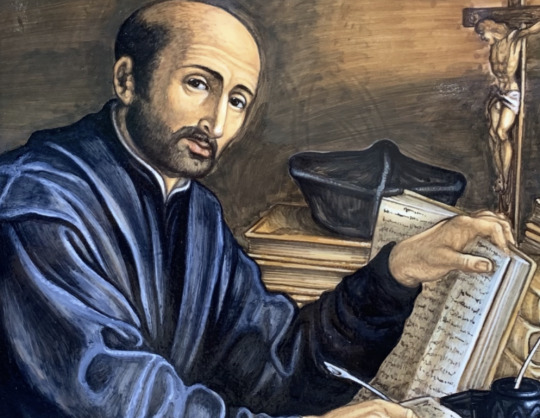
Today we celebrate the Feast of St. Ignatius of Loyola, commemorating July 31, 1556 when he entered into eternal life. With the growth of the Society of Jesus and spread of its institutions across the globe over close to five centuries, his legacy and impact have only grown in importance. As heirs of that legacy we continue to unpack the spiritual and pedagogical riches given by God to Ignatius for the benefit of the Church and the world.
Which of those riches is most helpful to us today? While many people would offer a different answer, I think we can learn most from Ignatius’s ability to discern a path forward in a time of conflict, controversy, and danger. Ignatius lived in a time of near-constant war and religious conflict. (His own conversion was precipitated by a near-mortal wound from one of those wars.) The Church had yet to reform, and was reeling from the attacks of Martin Luther and Henry VIII’s break with the papacy. Political and economic freedom, or anything we would recognize as justice in the civil or social sphere were non-existent. In other words, the crises faced by Ignatius and his companions, as they founded the Society of Jesus, were no less daunting than the ones we confront today. As a university founded in the darkest days of World War II, we seem to have drawn inspiration from their courageous leap of faith.
No one needs reminding of the crises we face today. We feel besieged by a world seemingly more divided and dangerous than ever. Ignatius may not offer answers, but the discerning path he offers is a hopeful one. He remained a pilgrim throughout his life, and the spirituality he offers each of us is a pilgrim’s spirituality—i.e. a spirituality for people on an often arduous and confusing journey. As a pilgrim, he was frequently uncertain of the next step, but never of the destination: he knew that God was that destination, and that Jesus accompanied him along the path and was the path in the truest sense. The firm conviction, born of experience, that God lay ahead of him, and that Jesus accompanied him, allowed Ignatius to confront many dangers with courage and serenity.
Similarly, in facing controversy and conflict, Ignatius wisely counseled his followers to go to the deeper roots of that conflict by addressing the underlying spiritual malaise and corruption besetting the Church. Perhaps in our own time we can learn from him by spending less effort focusing on which camp we belong to, or which argument will carry the day, and more on the nagging sickness at the heart of a world so alienated from itself.
#St. Ignatius of Loyola#Feast Day of St. Ignatius of Loyola#Fr. Paul K. Rourke#S.J.#Society of Jesus#Fairfield University#Jesuits#Spirituality
0 notes
Text

THE DESCRIPTION OF SAINT PETER CANISIUS
The Jesuit Priest and Holy Apostle of the Catholic Press
Feast Day: December 21
"Better that only a few Catholics should be left, staunch and sincere in their religion, than that they should, remaining many, desire as it were, to be in collusion with the Church’s enemies and in conformity with the open foes of our faith."
Peter Canisius, who is one of the major figures during the Protestant Reformation, called the 'Apostle of the Catholic Press' and known as the Second Apostle of Germany, was born in Nijmegen (located in Gelderland province), Holland (The Netherlands), on May 8, 1521, his mother died shortly after he was born.
In order to please his father Jacob, who is a burgomaster, he studied law for a few months at the University of Louvain. Realizing however, that he was not called to this career, he took a vow of celibacy and went to study theology in Cologne, Germany, where he earned a master's degree at the age of 19. There, while attending a retreat preached by St. Peter Faber, one of the first disciples of Ignatius of Loyola, he decided to enter the Society of Jesus.
After his ordination to the priesthood, he became famous for his talent in preaching. Ignatius considered him a model religious, prepared to go anywhere and to do anything. From Rome, Peter was sent to Germany, where he counteracted the Protestant doctrines and effected a religious revival among the people.
In 1552, Peter was called to Vienna, Austria, where 90% of the people had abandoned the Catholic faith. Many monasteries lay desolate, and not a single priest had been ordained for 20 years. Peter won the heart of the people by his works of charity. He ministered to the sick, visited the prisoners, and cared for the poor.
Realizing the great importance of mass media, he promoted the Catholic press to the best of his ability. During his lifetime, his catechism was reprinted over 200 times and translated into 15 languages.
Despite his success and popularity, Peter remained humble and submissive. He refused to be consecrated bishop of Vienna and Provincial of his order. He died at the age of 76 due to a stroke in Fribourg, Switzerland on December 21, 1597.
Canonized by Pope Pius XI in 1925 and declared a Doctor of the Church the same year, his major shrine can be found in Fribourg.
#random stuff#catholic#catholic saints#jesuits#society of jesus#peter canisius#petrus canisius#pedro canisio#catholic press#doctor of the church
17 notes
·
View notes
Text
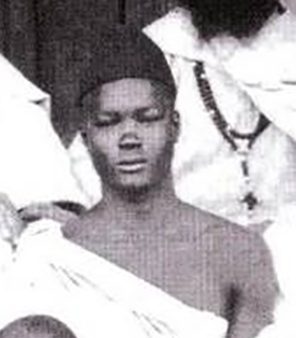
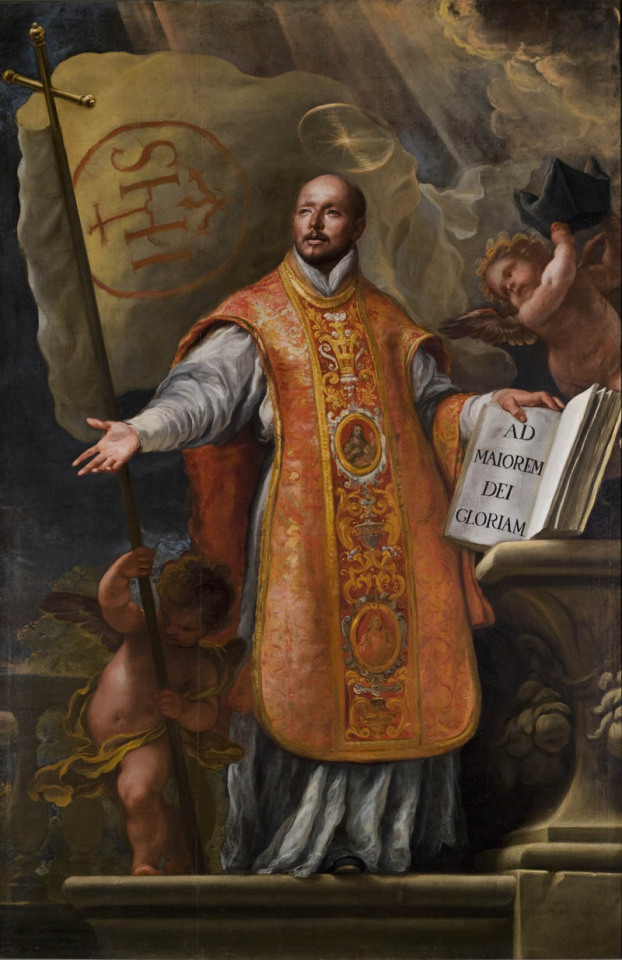
About St Charles Lwanga
About St Ignatius of Loyola
Losers' Bracket Round 2
#st charles lwanga#st ignatius of loyola#jesuits#society of jesus#catholic saint tournament#catholic#catholicism#catholic saints#christianity#tumblr polls#theology#tumblr tournament#polls#tumblr bracket
10 notes
·
View notes
Text
SAINT OF THE DAY (February 15)

On February 15, the Catholic Church honors Saint Claude de la Colombiere, the 17th century French Jesuit who authenticated and wrote about Saint Margaret Mary Alacoque's visions of the Sacred Heart of Jesus.
When he canonized St. Claude in 1992, then Blessed John Paul II upheld him as a model Jesuit, recalling how the saint “gave himself completely to the Sacred Heart, ever burning with love. Even in trials, he practiced forgetfulness of self in order to attain purity of love and to raise the world to God.”
Born in the south of France on 2 February 1641, Claude de la Colombiere belonged to a family of seven children, four of whom entered the priesthood or religious life.
He attended a Jesuit school in his youth and entered the order himself at age 17.
As a young Jesuit recruit, Claude admitted to having a “horrible aversion” to the rigorous training required by the order in his day.
But the novitiate of the Society of Jesus focused and sharpened his natural talents, and he would later take a private vow to obey the order's rules as perfectly as possible.
After completing his order's traditional periods of study and teaching, Claude became a priest in 1669.
Known as a gifted preacher, he also taught at the college level and served as a tutor to the children of King Louis XIV's minister of finance.
In 1674, the priest became the superior of a Jesuit house in the town of Paray-le-Monial.
It was during this time, in his role as confessor to a convent of Visitationist nuns, that Claude de la Colombiere became involved in events that would change his own life and the history of the Western Church.
One of the nuns, later canonized as St. Margaret Mary Alacoque, claimed to have experienced private revelations from Christ, urging devotion to his heart as the symbol and seat of God's love for mankind.
Within the convent, however, these reports met with dismissal and contempt.
During his time in Paray-le-Monial, Father la Colombiere became the nun's spiritual director, giving careful consideration to her testimony about the purported revelations.
He concluded that Sister Margaret Mary had indeed encountered Jesus in an extraordinary way.
Claude la Colombiere's writings and his testimony to the reality of St. Margaret Mary's experiences helped to establish the Sacred Heart as a feature of Western Catholic devotion.
This, in turn, helped to combat the heresy of Jansenism, which claimed that God did not desire the salvation of some people.
In the fall of 1676, Father la Colombiere, was called away from Paray-le-Monial to England.
During a time of tension in the religiously torn country, he ministered as chaplain and preacher to Mary of Modena, a Catholic who had become the Duchess of York.
In 1678, a false rumor spread about an alleged Catholic “plot” against the English monarchy.
The lie led to the execution of 35 innocent people, including eight Jesuits.
La Colombiere was not put to death but was accused, arrested and locked in a dungeon for several weeks.
The French Jesuit held up heroically during the ordeal, but conditions in the prison ruined his health before his expulsion from England.
He went back to France in 1679 and resumed his work as a teacher and priest, encouraging love for Christ's Sacred Heart among the faithful.
In 1681, Claude de la Colombiere returned to Paray-le-Monial, the site of St. Margaret Mary Alacoque's revelations.
It was there, on 15 February 1682, that the 41-year-old priest died from internal bleeding on the year's first Sunday of Lent, February 15.
Claude de la Colombiere was beatified by Pope Pius XI on 16 June 1929 – nine years after the canonization of St. Margaret Mary Alacoque.
He was canonized 63 years later by Pope John Paul II on 31 May 1992.
#Saint of the Day#Saint Claude de la Colombiere#Society of Jesus#Saint Margaret Mary Alacoque#Sacred Heart of Jesus#Paray-le-Monial
7 notes
·
View notes
Text
Answering a Jesuit's Eucharistic Heresy | Catholic Answers Podcasts
#youtube#catholic#catholicism#christianity#spiritual warfare#jesus christ#holy sacrifice of the mass#mass#eurcharist#holy eucharist#body of christ#jesuits#catholic answers#heresy#america magazine#father reese#thomas reese#society of jesus#sjw#sjw stupidity
1 note
·
View note
Text
"God's Grandeur" by Gerard Manley Hopkins
July 28 marks the 179th anniversary of the birth of Gerard Manley Hopkins, the famed English Jesuit priest who is considered one of the most influential poets of the 19th century.
To celebrate Hopkins’s birthday, the Jesuit Conference of Canada and the United States commissioned me to create a comics adaptation of one of his most famous sonnets, “God’s Grandeur.”
If you would like a free copy…

View On WordPress
#climate crisis#deforestation#forest fires#Gerard Manley Hopkins#God&039;s grandeur#Holy Ghost#jesuit conference of canada and the united states#jesuits#society of jesus
0 notes